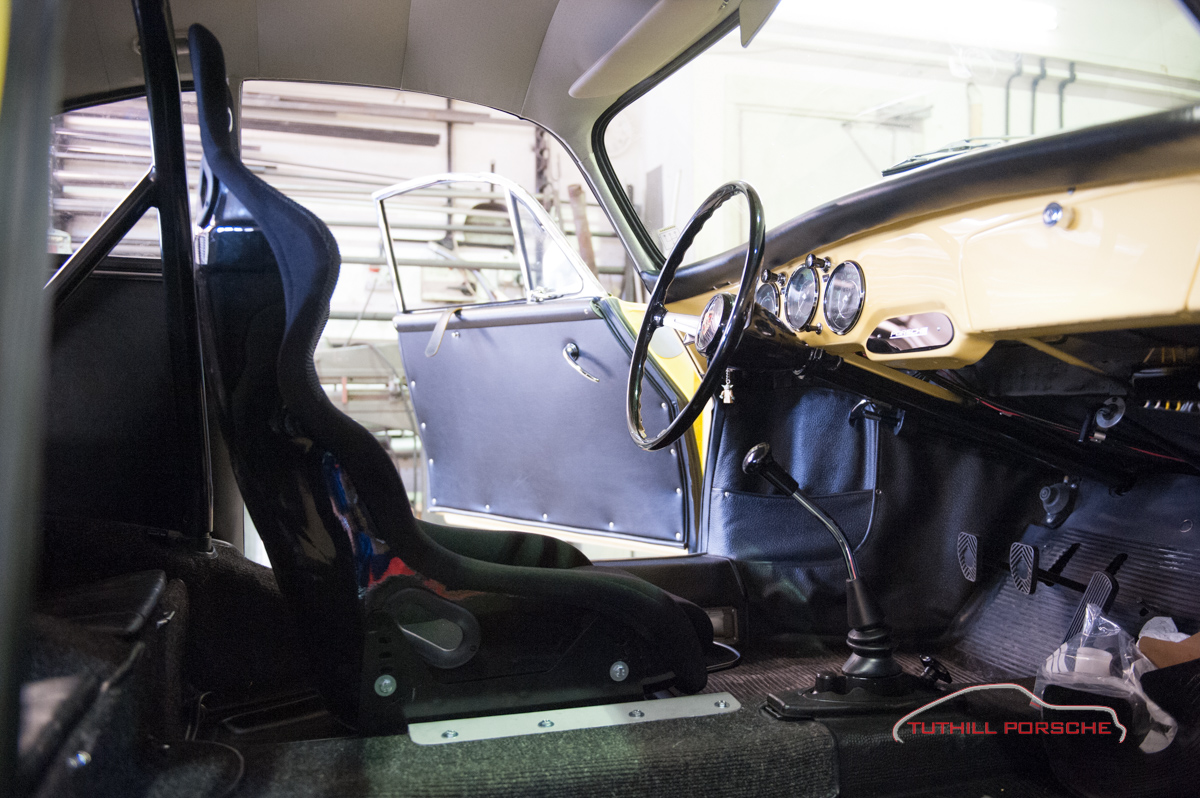
We’re currently preparing this Porsche 356 Super 90 GT to FIA standards to allow the car to compete in historic motorsport. Nothing too strange in that, you may think, as we’ve done quite a lot of 356 competition cars, including cars for the Peking to Paris rally amongst others, but this is a little different.
Built from 1948 to 1965, the Porsche 356 was Ferry Porsche’s first in-house production car. Early 356s were built by hand in Austria and production later moved to Stuttgart when Porsche got its buildings back after the war. More than 76,000 cars were built over the 18 years in production and at least half are believed to survive.
Carrera models are amongst the rarest 356s. First introduced to the model range with the 356A Carrera GS/GT in 1955, the Carreras featured the four-cam racing engine, which was exciting but leant towards fragility. When some competitors asked for the more reliable and easier to maintain 1600cc flat-four pushrod engine in the improved Carrera GT body and chassis, Porsche was happy to oblige by building the 356B Super 90 GT.
Far rarer than a Carrera GT with just twenty cars built by the factory, the Super 90 GT is a wonderful thing. Fitted with all the weight-saving parts from the Carrera, including aluminium wheels and body panels, RSK Spyder-style brakes and lightweight glass and door window mechanisms, the Super 90 GT was some 90 kilograms lighter than a standard 356.
Most if not all of the twenty factory cars built survive to this day and many already have FIA Historic Technical Passports, some of which were applied for when the cars were not incredibly sought after by investors and collectors and so could be converted with less regard to preserving originality.
We are preparing this Super 90 GT at a time when interest in the model is at an all-time high, so we are working carefully to preserve as much of the original fabric as possible. No new holes drilled and no metalwork removed: just sympathetic additions that will look period and, most importantly, work as intended without taking away from the value. Doing it this way is a challenge, but meeting new challenges is what we are all about.
 Back to News
Back to News

